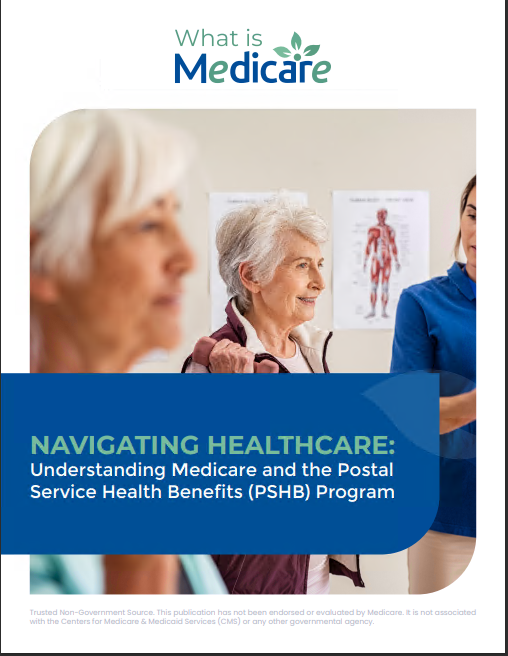Key Takeaways
-
Medicare Part A is often referred to as “premium-free,” but it still comes with several out-of-pocket costs that can catch you off guard if you’re not prepared.
-
Understanding the full cost structure of Medicare Part A in 2025—including deductibles and coinsurance—is essential for avoiding unexpected medical bills.
What Does Medicare Part A Really Cover in 2025?
Medicare Part A is known as hospital insurance, and in 2025 it continues to cover the major components of inpatient hospital care:
-
Inpatient hospital stays
-
Skilled nursing facility care (with conditions)
-
Some home health care services
-
Hospice care for terminally ill patients
While the coverage remains robust, it does not mean you won’t have to pay anything out of pocket. Many assume that since they qualify for Part A without a monthly premium, they are completely covered. That’s a costly misunderstanding.
Who Gets Medicare Part A Without a Premium?
In 2025, you qualify for premium-free Medicare Part A if:
-
You or your spouse worked and paid Medicare taxes for at least 10 years (40 quarters)
-
You are aged 65 or older and meet the work requirement
-
You receive Social Security or Railroad Retirement Board benefits
-
You’re under 65 and have a qualifying disability or end-stage renal disease (ESRD)
If you don’t meet these criteria, you may still purchase Part A, but it will come with a monthly premium. In 2025, these premiums depend on how many quarters of Medicare taxes you’ve paid over your lifetime.
What You Still Have to Pay Under Part A in 2025
Even if you qualify for premium-free Part A, that doesn’t mean you won’t encounter other costs. In 2025, the following apply:
Inpatient Hospital Deductible
You pay a deductible of $1,676 for each benefit period. A benefit period begins the day you are admitted to a hospital and ends after you haven’t received inpatient care for 60 consecutive days.
Hospital Coinsurance
After your deductible is met:
-
Days 1–60: $0 coinsurance (you’ve already paid the deductible)
-
Days 61–90: $419 per day
-
Days 91 and beyond: $838 per day (lifetime reserve days)
-
After lifetime reserve days are used: All costs are your responsibility
Skilled Nursing Facility Care
If you qualify for a skilled nursing facility stay after a hospital stay of at least three consecutive days:
-
Days 1–20: $0 per day
-
Days 21–100: $209.50 per day
-
After day 100: You pay all costs
Hospice Care Costs
Medicare Part A covers most hospice services, but you may still need to pay:
-
A copayment of up to $5 for each prescription drug related to symptom control
-
5% of the Medicare-approved amount for respite care
What Is Not Covered by Medicare Part A?
Understanding what Part A does not cover can help you plan your healthcare expenses more effectively. In 2025, the following services remain outside the scope of Part A:
-
Doctor visits while in the hospital (covered under Part B)
-
Outpatient care or surgery
-
Custodial long-term care
-
Most prescription drugs (unless in a hospice setting)
-
Personal care items such as razors or socks
-
Private-duty nursing
This is why many people enroll in additional coverage options or maintain other forms of insurance to fill in these gaps.
The Concept of Benefit Periods Can Lead to Repeated Costs
The benefit period structure of Medicare Part A means you may be responsible for multiple deductibles in a single year. Each benefit period restarts after 60 consecutive days without inpatient care. So if you’re hospitalized more than once with a gap of 60+ days between stays, you could pay the $1,676 deductible more than once.
How Lifetime Reserve Days Work
You get 60 lifetime reserve days to use over your lifetime. These are extra days of inpatient hospital coverage that come after day 90 of a hospital stay. Once you’ve used them, they’re gone for good. After that, if you’re still hospitalized beyond day 90, you’re responsible for all costs out of pocket.
Hospital Observation vs. Inpatient Admission
In 2025, it’s important to know the difference between observation status and inpatient admission. If you’re kept for hospital observation, even overnight, you may not qualify for Part A benefits like skilled nursing care afterward. Observation stays are generally billed under Part B, not Part A, which can lead to unexpected out-of-pocket costs.
Penalties If You Delay Enrollment in Part A
For most people, Part A is automatically assigned when they turn 65, especially if already receiving Social Security benefits. But if you don’t automatically qualify and delay enrolling, you might face late enrollment penalties.
If you have to buy Part A and don’t enroll when first eligible, your monthly premium could go up by 10%. You will have to pay this higher premium for twice the number of years you could have had Part A but didn’t sign up.
Planning for Costs: What You Can Do
It helps to plan ahead and be aware of your options:
-
Review your eligibility: Make sure you understand whether you qualify for premium-free Part A.
-
Budget for out-of-pocket expenses: Include deductibles, coinsurance, and possible multiple hospital stays.
-
Understand benefit periods: Track your inpatient care dates to estimate possible costs.
-
Evaluate supplemental coverage: Consider how additional insurance may help with gaps in Part A.
-
Ask about your admission status: Always verify whether you are admitted or under observation to prevent billing surprises.
Timing Your Enrollment Matters
If you’re not automatically enrolled in Medicare, there are specific enrollment windows to be aware of:
-
Initial Enrollment Period (IEP): Begins three months before your 65th birthday, includes your birth month, and ends three months after
-
General Enrollment Period (GEP): Runs annually from January 1 to March 31
-
Special Enrollment Period (SEP): Available in some situations, such as if you lose employer coverage
Signing up on time is crucial to avoid unnecessary penalties or coverage gaps.
What About Foreign Hospital Stays?
Medicare Part A generally does not cover hospital stays outside the U.S. However, there are rare exceptions such as emergencies near the U.S. border. You should not assume your hospital expenses will be covered when traveling abroad.
Don’t Confuse Premium-Free with Cost-Free
The idea that Medicare Part A is “free” is a bit misleading. While you may not pay a monthly premium, the other costs—like deductibles and coinsurance—can still add up quickly, especially with prolonged or repeated hospital stays.
Knowing these hidden or less-discussed costs allows you to plan wisely and avoid surprises. You should also consider how other parts of Medicare, such as Part B or Part D, fit into your overall healthcare coverage.
Final Thoughts on What Part A Really Costs You
Medicare Part A in 2025 gives you critical hospital insurance, but it’s far from entirely cost-free. Between deductibles, coinsurance, benefit period resets, and limited coverage for some services, it’s important to plan ahead.
If you’re approaching age 65 or re-evaluating your Medicare coverage, now is the time to look at the full picture. Talk to a licensed agent listed on this website to better understand how Part A fits into your needs and to discuss options that can help you manage your costs.









